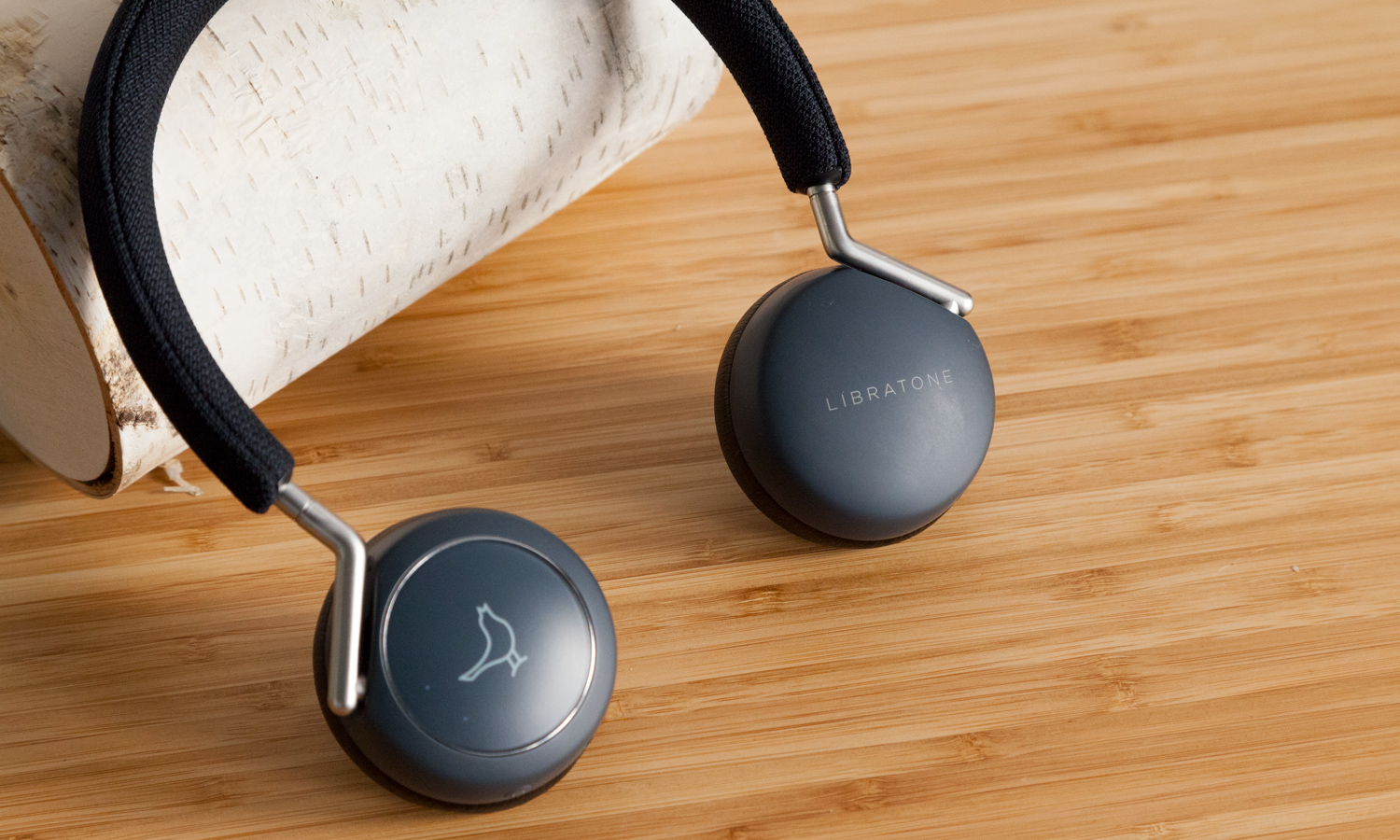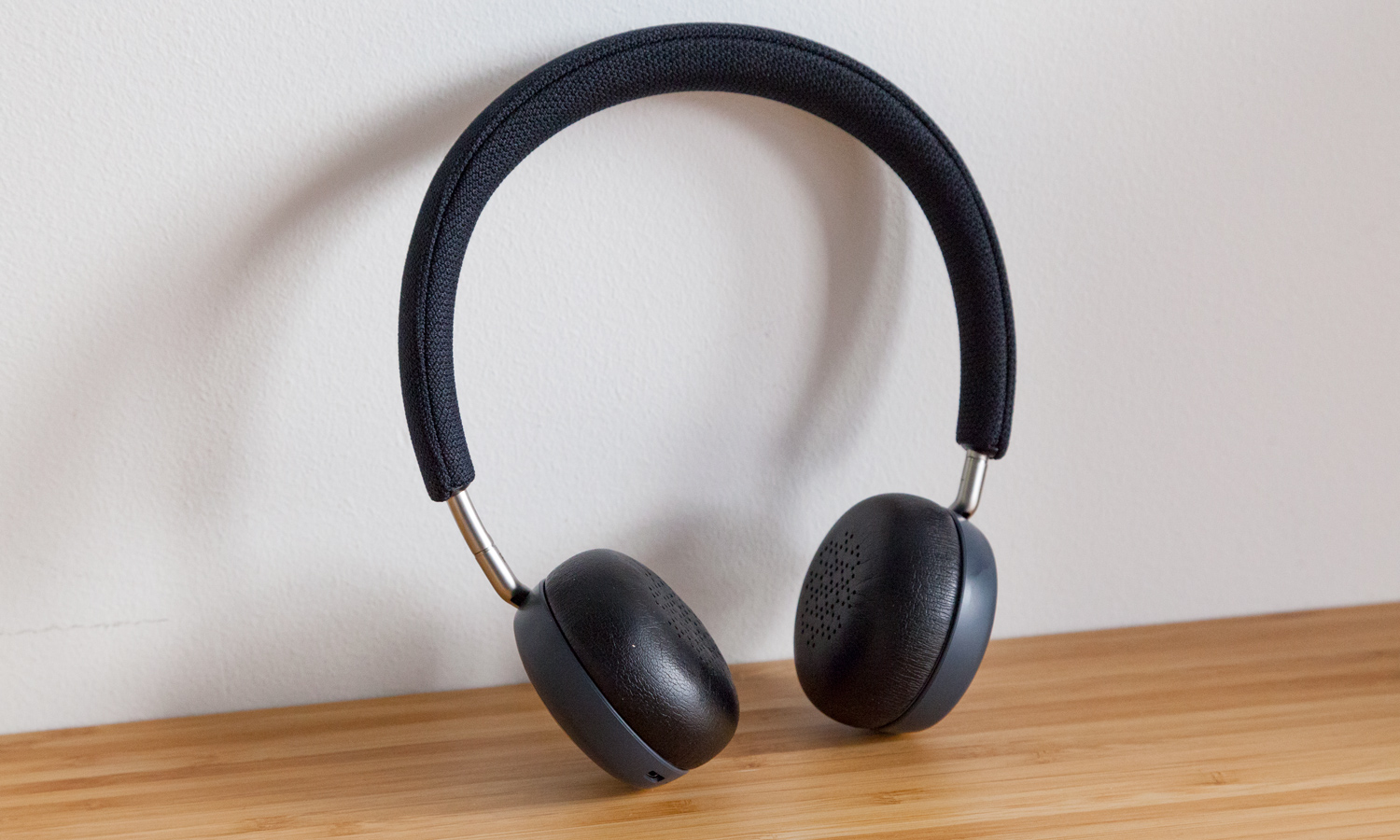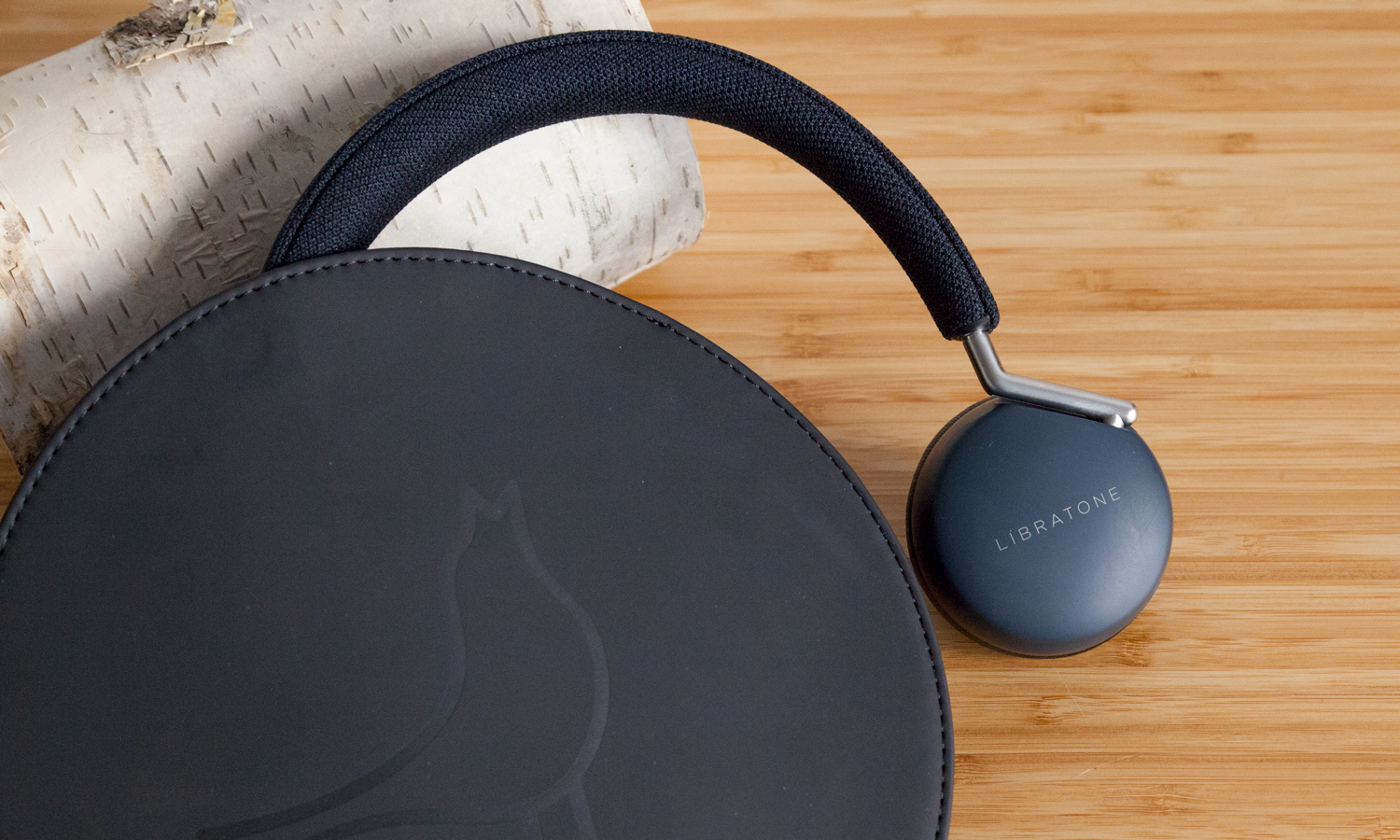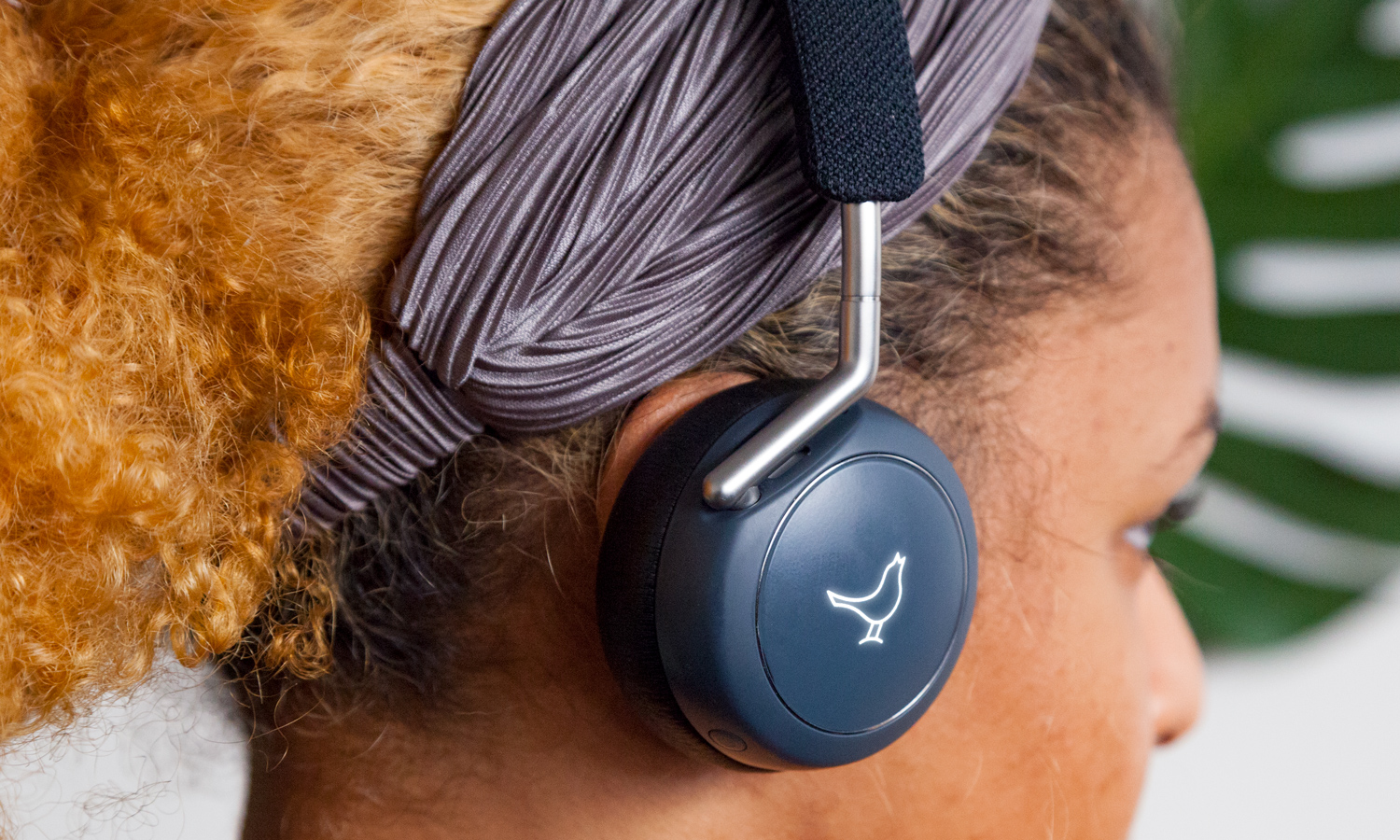Tom's Guide Verdict
The Libratone Q Adapt On Ear headphones provide excellent sound quality, style and comfort along with its active noise-cancelling technology for only $250.
Pros
- +
Great sound quality
- +
Lightweight and compact design
- +
Extremely comfortable
- +
Convenient proximity sensor and touch panel
- +
Unique app offerings
Cons
- -
Active noise cancellation needs work
- -
Competitors have longer battery life and wider Bluetooth range
Why you can trust Tom's Guide
Finding a noise-cancelling and comfortable on-ear headset that's less than $300 is usually a difficult task, but this isn't the case with Libratone's Q Adapt On Ear headphones. You'll barely notice the lightweight Q Adapt on your head, but it packs a punch with crystal-clear audio for only $250. Add in its convenient touch controls, modern design and comfortable cushioning, and the Libratone Q Adapt manages to stand out from a crowded pack of premium on-ear headphones.
Design
Available in either Cloudy White or Stormy Black with gunmetal gray and silver accents, the Q Adapt headphones are fashionable and sophisticated. Soft memory foam and synthetic leather cushion the earcups, while a woven fabric lines the headband.
The headphones can be adjusted with a slider that extends or shortens the swivel earcups to your preferred height. You might want to be careful when throwing this headset in your bag since it's not foldable. If you want to keep your Q Adapt pristine, use the included carrying case.
A light-up Nightingale is present on the Q Adapt's right earcup, which signals whether the headset is on or in use via Bluetooth; the left earcup simply displays a Libratone logo. Like the Fiil Canviis, the Q Adapt's right earcup houses a touch-control panel that lets you manage playback settings with a few hand gestures. Swiping clockwise and counter-clockwise raises and lowers volume, respectively, while holding the touch panel for 3 seconds pauses ("Hush") and plays audio.

Double tapping the panel skips to the next track and triple tapping skips back. Throughout my testing, I found the touch panel on the Libratone's Q Adapt to be more convenient than the one found on the Fiil Canviis. My listening experience wasn't interrupted when I accidentally bumped into the panel or brushed past it. I also appreciated the Q Adapt's proximity sensor that paused and resumed playback whenever I put the headphones on or took them off.
It was easy to forget I was wearing the Q Adapt headphones.
If you're low on battery, you can make use of the AUX cable Libratone provides. Wired mode is connectable to any device that has a 3.5mm audio jack, including smartphones (or their dongles), laptops and tablets. Tethering yourself the old-fashioned way will make you lose the Q Adapt's star features, including active noise cancellation, audio filters, touch controls and the proximity sensor.
Comfort and Stability
When I took the Libratone Q Adapt out of its package, I was shocked at how feather-light it felt in my hands. Right off the bat, I could tell the Q Adapt would weigh less than the Fiil Canviis (7.7 ounces) and Bose QuietComfort 35 II (8 ounces), and my assumption was correct, as the Q Adapt beat out the competition by 0.7 and 1 ounce, respectively. It was easy to forget I was wearing the Q Adapt headphones, which made for a pleasant listening experience. It was nice to not feel the pinch that many on-ear headphones bring under extended use.
Get instant access to breaking news, the hottest reviews, great deals and helpful tips.

For the most part, the Q Adapt headphones felt snug when I sat still, but their placement shifted during more physical activity. If you plan to run or workout, the Q Adapt headphones are not ideal, seeing as they slide off when leaning your head forward. And this happens whether you tie your hair back or not. (Though I found that leaving your hair down greatly exacerbates the problem.)
Setup
Pairing the Libratone Q Adapt On Ear headset to your chosen device is a simple task. Activate Bluetooth on your device and turn the Q Adapt headphones on with the power button at the base of the left earcup. Select the "Libratone Q ADAPT On Ear" option in your available Bluetooth settings to pair your device with the accessory. You can also pair your devices manually via the Libratone app. Both methods take less than a minute.
When I connected the Q Adapt headphones to my iPhone 7, my ears were greeted with a single beep. There's no built-in assistant available to voice your selections. Varied beeps are the only indications you'll get when turning the power on and off, and skipping between tracks.
The Q Adapt re-created Andrea Bocelli's rendition of "Ave Maria" with the high and booming tones you'd expect from a tenor.
Audio Performance
I tested a variety of genres with the Libratone Q Adapt On Ear headphones, from K-Pop to hip hop, alternative rock, and everything in between. Each song I listened to sounded sharp and dynamic. Bass-heavy tracks like RM's "Joke" and Snow Tha Product's "AyAyAy!" were replicated with potent and accurate sounding clarity.

Twenty One Pilots' "Heathens" and Bea Miller's "Like That" were reproduced with punchy instrumentals. The Q Adapt captured both songs' rock and pop bass, along with diverse percussion and strings. The vocals also came through distinctly.
When I switched to more classic and vocally challenging songs, my ears were treated to operatic sound quality. The Q Adapt recreated Andrea Bocelli’s rendition of "Ave Maria" with the high and booming tones you'd expect from a tenor, while Maria Callas' "Habanera" performance captured her wide mezzo-soprano range. There wasn't any perceptible distortion in the instrumentals either from what I could hear.
I compared the audio performance of the Libratone Q Adapt, the Fiil Canviis and the Bose QuietComfort 35 II, and it was clear that the Q Adapt came in third place. Its audio performance was great, but playing the same songs back to back on the Fiil Canviis and Bose QC 35 II returned richer sound and truer noise cancellation.

Audio quality remained the same with the Aux cable attached. However, doing so defeats the purpose of having some semblance of active noise cancellation, as well as the Q Adapt's smart features like the touch control panel and proximity sensor. Audio settings modified in the Libratone app are also made invalid when you're in wired mode, including enhancements, internet radio and streaming. If you're low on battery or on a plane, the Aux cable is useful, but other than that, it's better to stick with Bluetooth.
Libratone App
The Q Adapt On Ear headphones are supported by the Libratone app, which lets you view and manage settings, such as active noise-cancelling, instrumental enhancements, touch controls, proximity sensor, LED lights and customizable themes.
Selecting the Libratone Q Adapt On Ear icon listed below the Soundspaces section on the main menu lets you choose among four noise-cancelling modes: CityMix Level 1 allows in 80 percent of outside noise, City Mix Level 2 allows 60 percent, City Mix Level 3 allows 30 percent and City Mix Level 4 allows 10 percent or lower. You can also choose among Neutral, Extra Bass or Enhanced Treble for your audio.
The My Music section is where the real fun happens. Here, you can add your favorite channels to My Collection to play them anytime, or link your Tidal and Spotify accounts so you can stream millions of songs to your Q Adapt. Personally, I found the inclusion of an Internet Radio a unique feature that helps you discover music and radio shows from around the globe. I also appreciated that the app can connect up to 2 Libratone devices, so you and a friend can listen at the same time.
Assistant Friendly
The Libratone Q Adapt On Ear headphones are compatible with Siri and Google Assistant. Pressing the touch panel for 5 seconds will trigger your device's configured assistant. In my case, using Siri was a typical experience you'd expert from an iPhone. Siri addressed my queries about the weather and nearby restaurants correctly. I also had no issues asking Siri to set alarms or reminders. Sometimes Siri misheard what I was saying, but I wouldn't blame the Libratone's microphones for that.
Noise Cancelling
Our gold standard for active noise-cancelling headphones (ANC) is the Bose QuietComfort 35 II, so we put the Q Adapt toe-to-toe with it. Libratone's headphones have four ANC modes with a percentage range of less than 10 to 80 regarding how much outside noise can pass-through the mics.

Running errands in NYC with ANC activated was satisfying, but I had to blast my volume to achieve truer noise cancellation (CityMix Level 4). This wasn't necessary when I tested ANC for the Fiil Canviis and the Bose QuietComfort 35 II, both of which blocked the majority of outside noise at a low-volume setting of 6 percent on my iPhone.
For $250, it's a bit of a let down that you have max out your device's volume to achieve an immersive experience.
Under this same setting, audio was silent with the Q Adapt On Ear headphones and I could hear slight sounds like typing and neighboring conversations. Hiking the volume up to 25 percent made little difference, and I could hear the rumbling motion of train cars along with its bustling passengers during my commute. However, ANC improved whenever I upped the volume to 50 percent and above. For $250, it's a bit of a letdown to have to max out your device's volume to achieve an immersive experience.
The silence between songs or whenever I paused the music allowed a variety of sounds in. Although the sounds came through muffled, I could still hear subway announcements and eavesdrop on conversations taking place on the platform.
Battery Life
Libratone claims that the Q Adapt’s battery can last up to 20 hours of continuous play. In my usage, I got a little over 19 hours out of them. That time is 6 hours shorter than the Fiil Canviis. and 3 hours shorter than the Bose QuietComfort 35 II. Nineteen hours of battery life isn't bad, but considering it takes 3 hours to fully charge the Q Adapt when its competitors can do so in less time, is a bit of a letdown. However, the result I observed could've also been affected by my toying with the Q Adapt's active noise cancellation and audio filter settings.
Call Quality
The Libratone Q Adapt's integrated noise-cancelling microphone delivered crisp call quality. Whether I participated in video conference calls at home or made phone calls out in the noisy streets of NYC, I was able to hear my colleagues and friends clearly. When I questioned others how I sounded, the consensus was that my voice sounded accurate. I didn't have to compete with loud background noise when I talked, either, which made hands-free calling a relief.
The Bluetooth range on the Q Adapt headset was also decent. It wasn't wide enough to survive a coffee run to our office kitchen whenever I left my iPhone at my desk. However, I could go as far as 30 feet away without losing call quality in my apartment, which has fewer and thinner walls compared with my office. This result isn't wider than what we saw from the Fiil Canviis (50 feet) and the Bose QuietComfort 35 II (35 feet), but it does the trick if you don't plan on venturing far.
Bottom Line
If you want a pair of noise-cancelling headphones for under $300, Libratone's wireless Q Adapt On Ear headset is a good performer. However, for the same $250 price tag, you can get your hands on the Fiil Canviis, which has better ANC and sound quality, as well as a longer battery life and wider Bluetooth range. But if comfort is your priority, you won't be disappointed with the Q Adapt.
For an additional $100, you can opt for the Bose QuietComfort35 II, a headset that offers the best ANC and sound quality money can buy, along with all the comforts that come with over-ear headphones. However, if shelling out that much cash on a single pair of headphones is too much for you, the Q Adapt On Ear headphones are more than capable of providing an enjoyable listening experience.
Credit: Tom's Guide
Cortney Moore is a multimedia journalist whose work has appeared in many places, including Tom's Guide, Fox News, The Sun, Buzzfeed, Yahoo Finance, and more. For Tom's Guide, she's written about a range of topics, from gaming to apps and phones. Currently, she works at Fox Business Network as an associate producer/writer.

